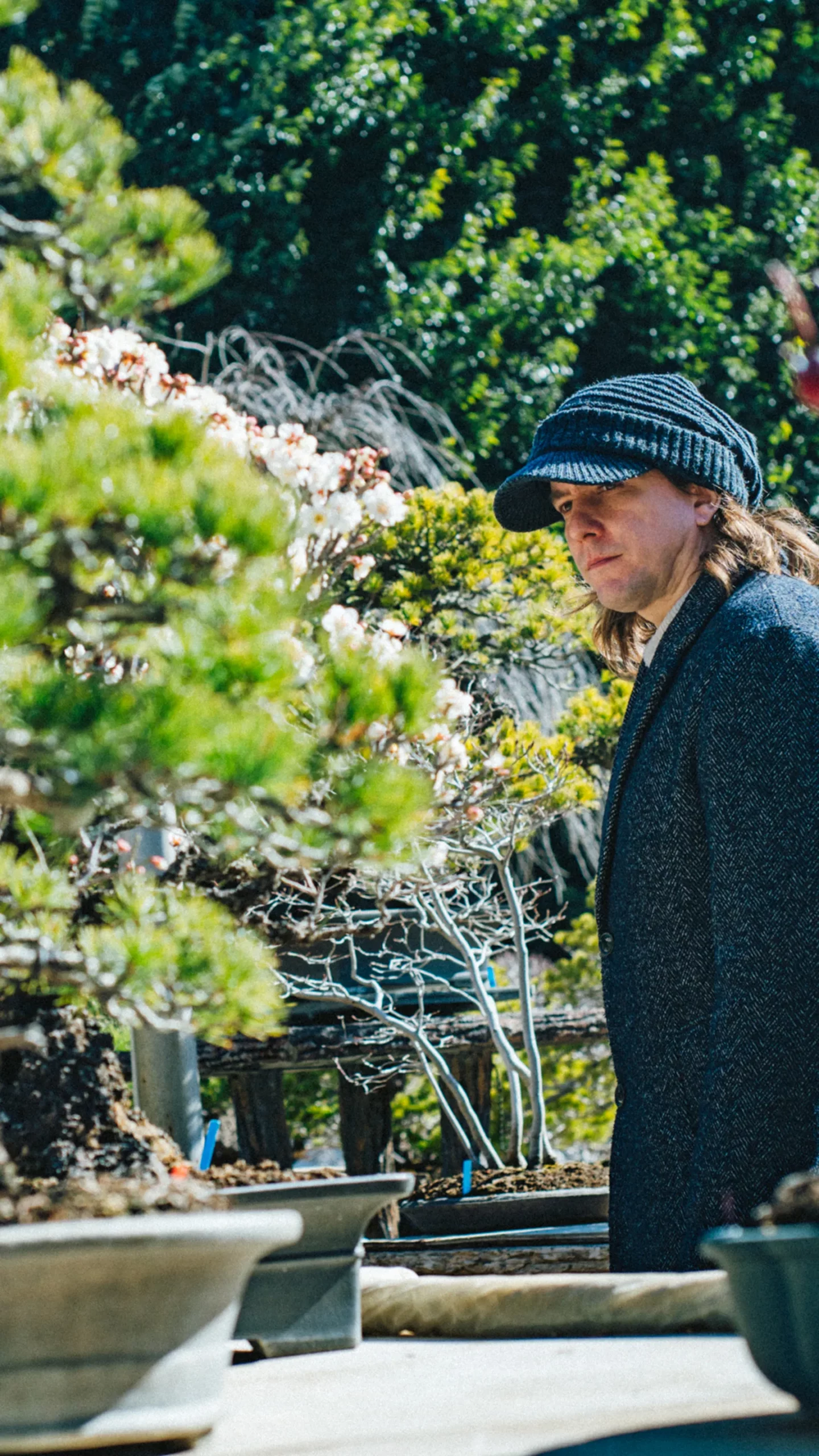A quiet revolution is reshaping Japan’s cultural landscape. From the dynamic rhythms of Nakano Yamatocho’s DAIBON to the vibrant processions of Sumida’s Sumiyume Odori Parade, a new wave of Bon Odori festivals is breathing fresh life into tradition. Meanwhile, artists are reinterpreting folklore, finding new meaning in the echoes of the past. This revival of local culture isn’t just a trend—it’s a movement, rippling across Japan and beyond.
In this spirit, the Sleeping Memory exhibition, held in Saitama this February as part of the Imaginary Saitama project, took an unexpected muse—bonsai. Through immersive audiovisual art, the exhibit invited visitors to see this centuries-old practice in a new light. Intrigued, I ventured to the heart of its legacy, Omiya Bonsai Village, to experience the “sanctuary of bonsai” firsthand.
INDEX
Glowing Particles in a Traditional Japanese Room
Stepping into a community house repurposed from an old Japanese home, I take off my shoes and enter. Inside the pitch-dark tatami room, faint particles of light begin to float, gradually forming the shape of a bonsai tree, accompanied by an ethereal soundscape. What exactly is happening here…? The unexpected scene makes me pause in awe for a moment.
This is a glimpse into Sleeping Memory, an audiovisual installation by Leonid Zvolinsky, exhibited at Bonsai Shiki no Ie in Omiya Bonsai Village—known as the “sacred ground of bonsai”—from February 8 to 16, 2025, in Saitama City’s Kita Ward.
That said, there are many questions to unravel. First, why is Saitama’s Kita Ward, Bonsai-cho, considered the heart of bonsai culture? What exactly is Omiya Bonsai Village? How did a digital art piece emerge from a theme seemingly so distant from the digital world—bonsai? And ultimately, what is this work trying to convey to its audience?
This article explores these questions and takes a deeper look at the thriving art scene in Saitama. We also had the chance to speak with Sleeping Memory‘s creator, Zvolinsky, and will share his insights along the way.

INDEX
A Bonsai Paradise Thrives in Saitama
Omiya Bonsai Village is a densely packed area of bonsai gardens located to the north of Omiya Park Station on the Tobu Urban Park Line. Following the Great Kanto Earthquake, bonsai craftsmen who had been affected by the disaster in Tokyo sought a new place to settle. They moved in groups to this location, which was well-suited for bonsai cultivation due to its strong soil, high-quality earth, water, and air. This marked the beginning of the village.
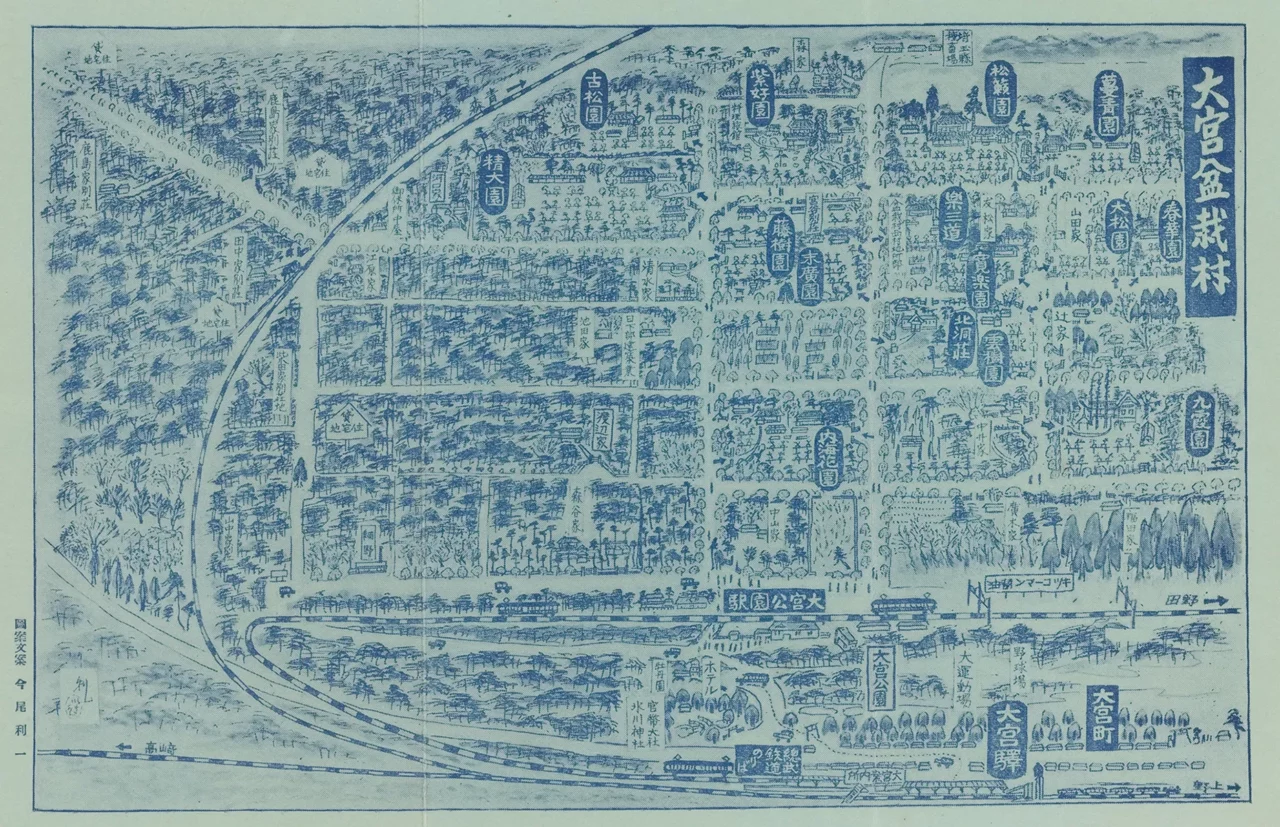
In those early years, a set of community rules fueled by a deep love for bonsai took shape: “Every household must have at least 10 bonsai,” “Gates must remain open,” “No two-story buildings,” and “Hedges should be made from living plants.” This collective spirit created an environment that could be likened to a bonsai artisan’s utopia. Enthusiasts and supporters were drawn to this unique vision, and by the height of its pre-war prosperity, over 30 bonsai gardens had emerged. This community, united by a shared passion, became a living embodiment of bonsai culture.
The town’s name was officially changed to “Bonsai Town,” and in 2010, the world’s first public bonsai museum, the Saitama City Omiya Bonsai Art Museum, was born. While the number of bonsai gardens has now dwindled to just six, traditional artisans with refined skills continue to coexist with younger artists pushing creative boundaries, ensuring that this village remains the heart of bonsai culture both in Japan and beyond.
Omiya Bonsai Village, which began its journey in 1925 after the Great Kanto Earthquake, will celebrate its 100th anniversary in 2025. That century reflects the dedicated and passionate steps taken by bonsai lovers who have nurtured this tradition.
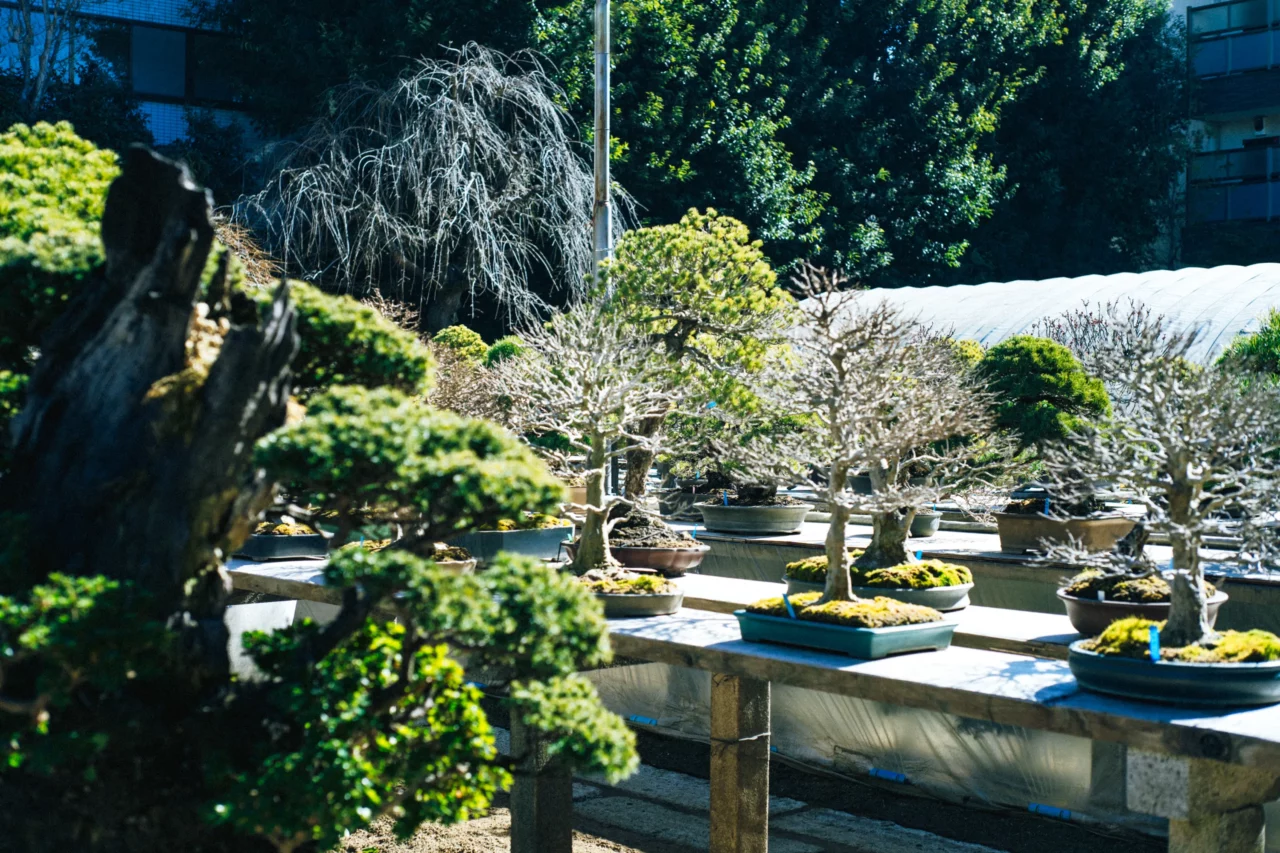
INDEX
Promoting Regional Culture and Supporting Artists: Arts Council Saitama’s Initiatives for Cultural Growth and Artist Development
Now that we understand the connection between this land and bonsai, the question arises: why combine bonsai with digital art?
The exhibition I mentioned earlier is part of a project titled Imaginary Saitama, spearheaded by Arts Council Saitama.
Imaginary Saitama is a digital art initiative that highlights four of Saitama City’s unique cultural treasures: “bonsai,” “manga,” “dolls,” and “railroads.” In collaboration with the Curation Education and Research Center at Tokyo University of the Arts, the project invited public submissions in fiscal year 2023. The most captivating ideas were selected and brought to life with support from Arts Council Saitama. For the city, it’s a fresh way to showcase its rich heritage, while for artists, it’s a rare opportunity to create under the guidance and support of the local government. This venture, which seeks to explore and express the essence of these four cultural pillars, offers exciting potential for both the city and the artists involved.
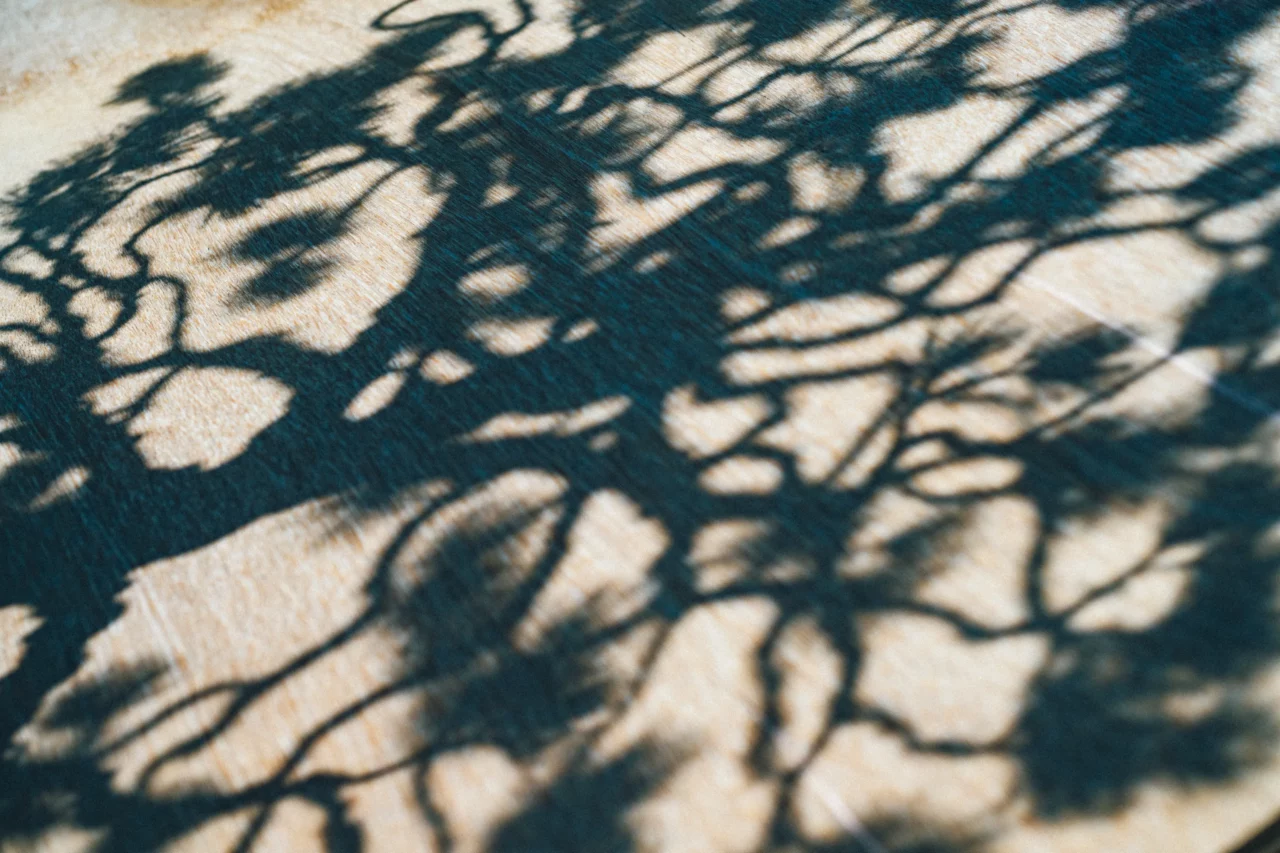
What makes this project so fascinating is its approach of reinterpreting four culturally significant traditions through the lens of “something meets Digital.” While bonsai is relatively easy to visualize in a digital context, the enthusiasts of these cultural resources are often from older generations. By merging them with digital art, Arts Council Saitama aims to engage younger audiences and highlight the ongoing evolution of these cultural treasures.
Leonid Zvorinsky’s Sleeping Memory is the first groundbreaking piece in the Imaginary Saitama project. Now, the reason why the community house “Bonsai Shiki no Ie” in Bonsai Village was transformed into a digital art exhibition space becomes clear.
INDEX
Engaging in Dialogue with Digital Bonsai
Now, let’s take a closer look at the work Sleeping Memory. Standing in front of the large screen, you can see particles and sound shifting and moving. The piece changes in response to the viewer’s movements, with the movement of the right hand influencing the visuals and the left hand affecting the sound. It is said that the work uses a sensor called “Kinect,” which is commonly used in games.
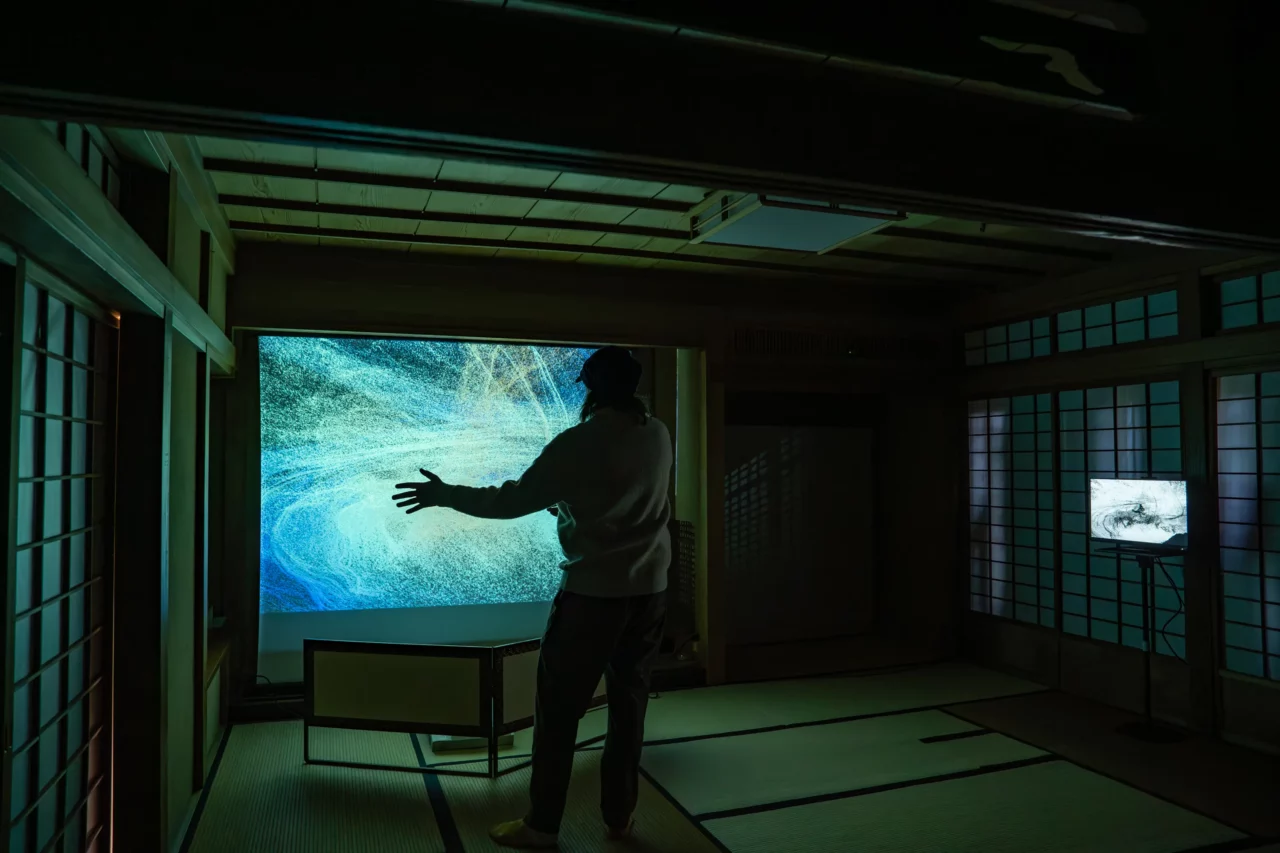
The interactive visuals are based on data obtained from a 3D scan of a hundred-year-old “black pine” housed at the Omiya Bonsai Museum, which has been transformed into a particle-based form. The sound composition is created from environmental sounds collected within Saitama City. While fragmented and not immediately recognizable, it is said that sounds such as cicadas in Omiya Park, train noises, and the sound of an ambulance can be heard.
The particles respond sensitively to human movement, slowly gathering together to form the shape of a bonsai. At times, the bonsai shakes and the particles scatter. There are moments when the viewpoint zooms in, almost as if you’ve entered the bonsai itself. Before you know it, you find yourself engrossed in a dialogue with the digital bonsai.
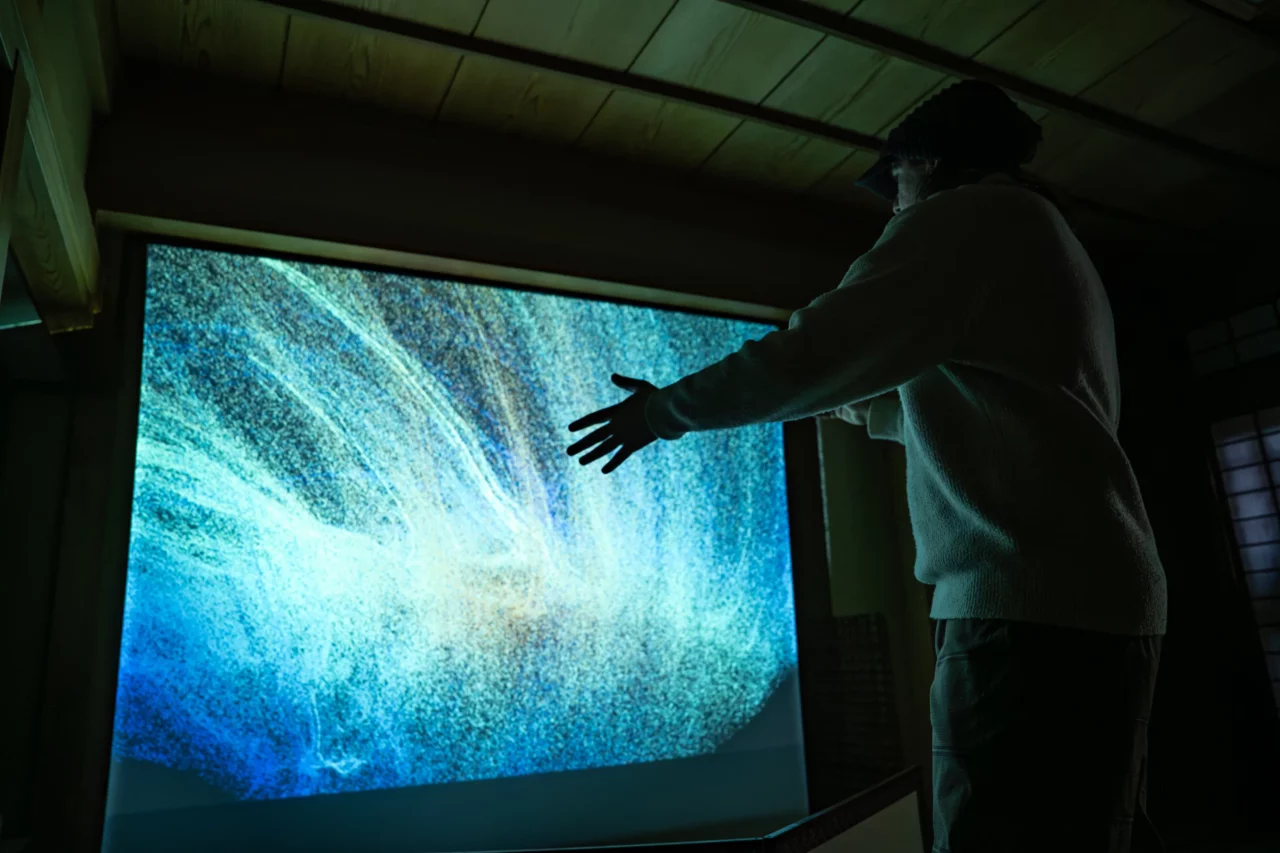
In addition, there are monitors displaying videos that express the basic concept of the artwork, as well as real-time projections of the viewers’ own images, alongside devices playing the sound sources used in the piece. Together, these elements form a cohesive exhibition space.
INDEX
Zvolinsky: “A Fascination with Hidden Things of the World”
I had the opportunity to ask the artist, Leonid Zvolinsky, about the inspiration and ideas behind this work.
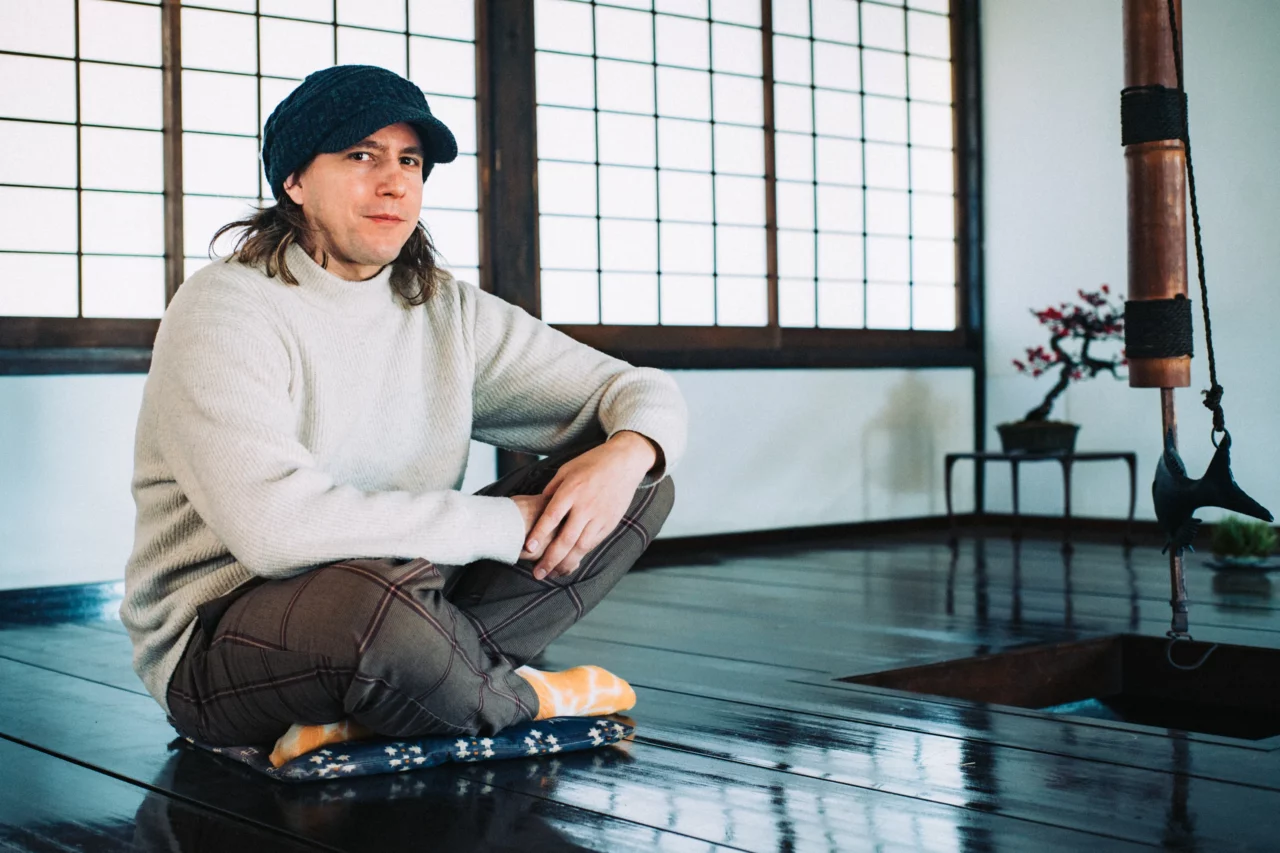
Zvolinsky, who started his music education early in life, began composing his own music at around the age of five. After studying composition and sound engineering in Russia, he moved to Japan seven years ago. Since then, he has developed an interest in media art and interactive technology. Notably, he is fluent in Japanese and can easily conduct interviews without the need for an interpreter.
I heard that you’re working on media art related to sound. Could you briefly share what you’re most interested in as an artist and what kind of works you’ve created so far?
Zvolinsky: I’m interested in the themes of “communication of information” and “memory.” Memory is never the same; when we recall something important, it seems we constantly overwrite and create new memories each time.
It’s surprising how unreliable our minds can be, isn’t it?
Zvolinsky: Yes [laughs]. I was really surprised when I learned about it while researching cognitive science. That led me to think more deeply about it, and around five years ago, I created a work called X-SynapseL. When humans listen to sounds or music, the physical signals we perceive are converted into mental images of sound in the brain. However, there seems to be a kind of “discrepancy,” almost like an illusion, in this process.
That’s really fascinating!
Zvolinsky: These auditory characteristics are, in a sense, “hidden things of the world.” It’s not fantasy; there are truly many mysterious and fascinating “hidden things” in the world. I’m interested in these and want to present them through my works.

INDEX
Bonsai: A Collection of Sleeping Memories
Was Sleeping Memory born from this idea?
Zvolinsky: Yes, the concept was sparked by a recent study from Nature Communications, conducted by Saitama University. It suggests that plants communicate with each other when they face danger. They don’t just send out signals; they also receive information. It’s like a form of communication in its own right.
Plants are “talking” to each other?
Zvolinsky: Yes, exactly. I started thinking, what if plants weren’t just communicating with one another, but were trying to communicate with humans as well? Of course, we can’t understand how plants convey information. But I thought, perhaps this could be expressed through abstract art. I first had an idea related to sound, and from there, the visual concept evolved.
What led you to make it interactive?
Zvolinsky: Well, creating a memory requires interaction, right? Without interaction, there’s no memory. Bonsai and humans engage in a kind of communication—whether it’s shaping the branches or adjusting the light. A craftsman might be “talking” to the bonsai in their own way. Even though bonsai can’t hear in the traditional sense, they might still feel the vibrations of sound. So, I thought it would be fascinating for viewers to interact with the digital bonsai themselves, even if only for a brief moment.
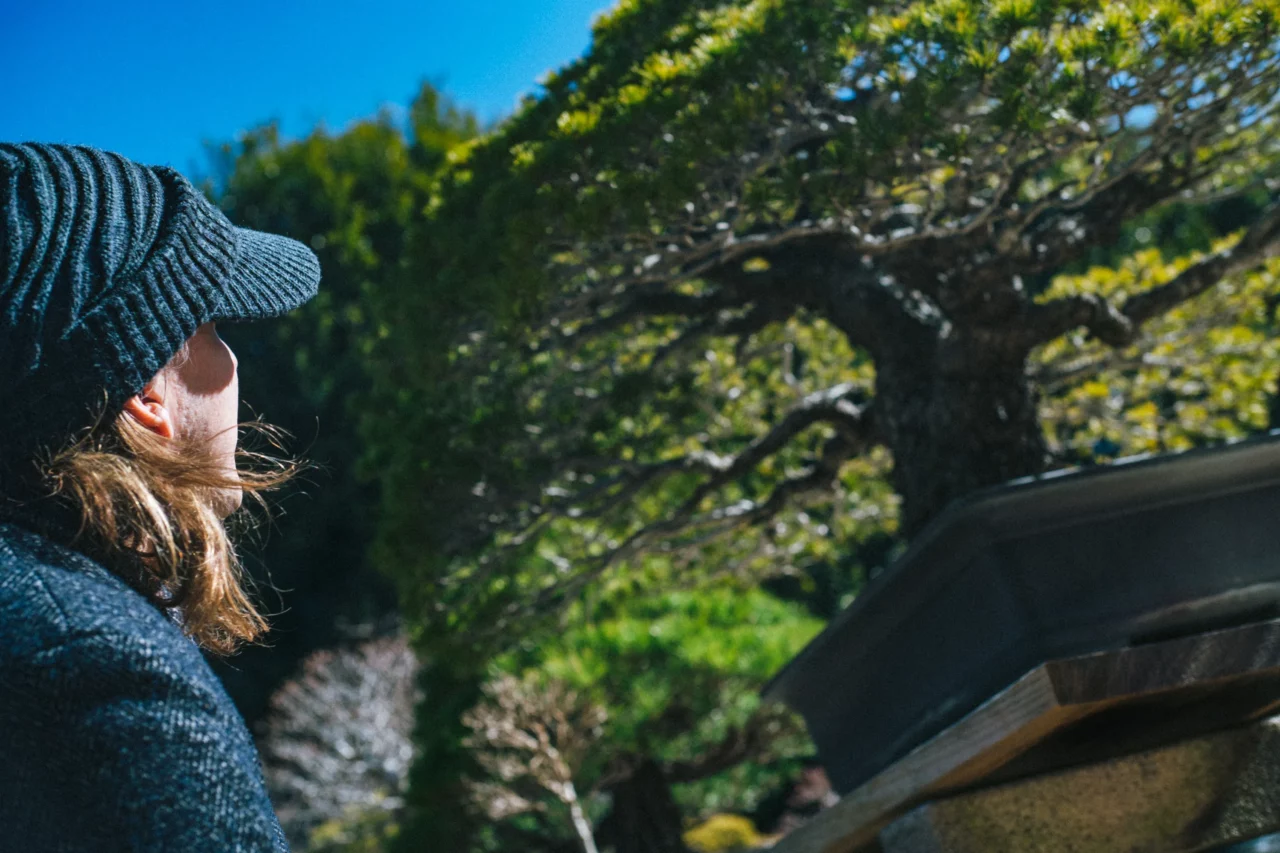
I see. Indeed, bonsai may be quite similar to your creative themes—an accumulation of memories, perhaps…
Zvolinsky: Exactly. When plants grow naturally, they don’t take on this kind of shape. But with bonsai, through communication with humans, they are shaped and can live for 100 or even 200 years if carefully nurtured. I imagine that inside bonsai, there are “sleeping memories.”
Did you have prior knowledge of bonsai?
Zvolinsky: Not in great detail, but I did take an online lecture around 2021. I had an interest in traditional Japanese culture, so I joined the session, which covered bonsai as well as tea ceremony and Japanese painting. Among all of them, bonsai left the strongest impression on me. This art form evolves over time, changes depending on the perspective, and is truly fascinating.
Like music, bonsai may share a quality of being an art form tied to time.
Zvolinsky: Yes, that’s right! The bonsai plum tree here has changed so much just over the past week. It only had one flower at first, but now it’s blooming so much more. Just like in tea ceremonies, the enjoyment of the seasonal changes in a piece is something uniquely Japanese.
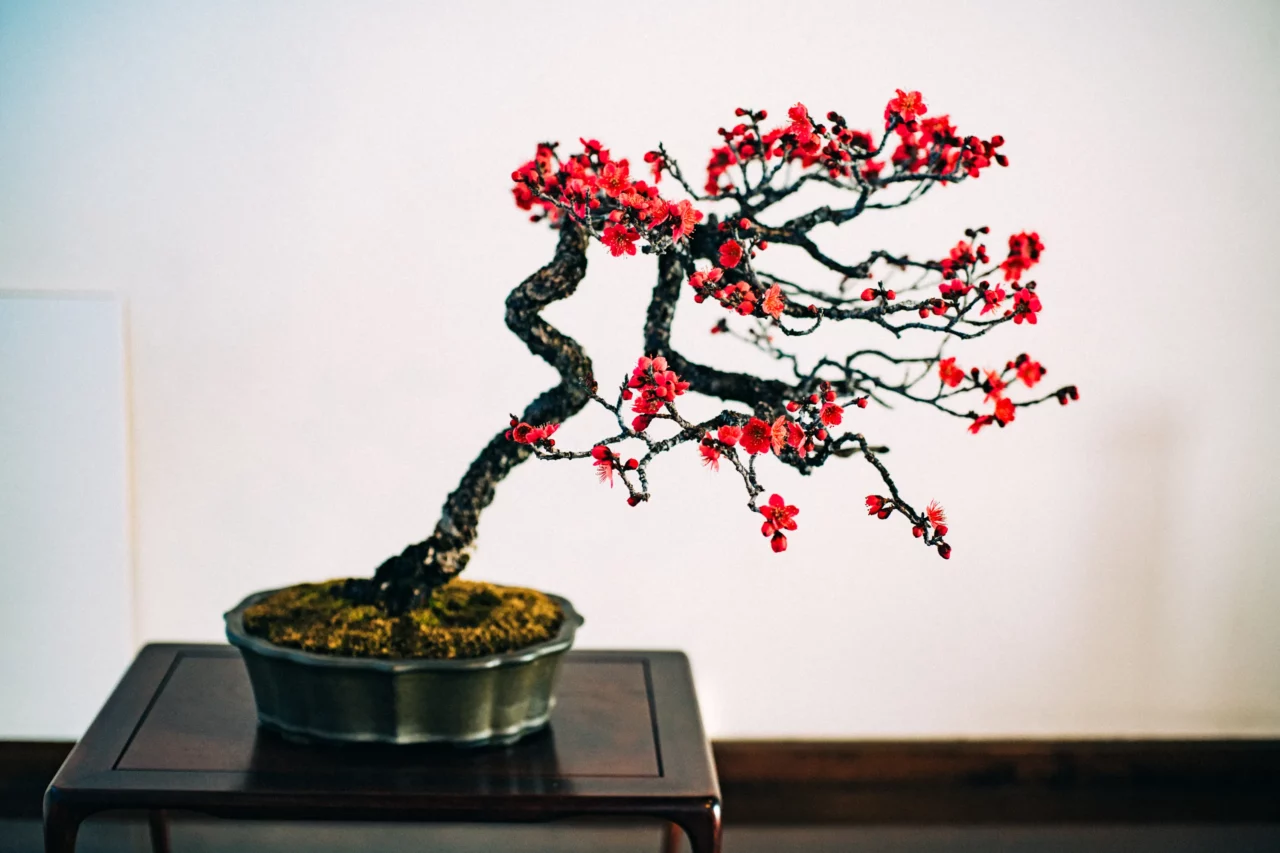
Interestingly, Zvolinsky is also learning to play the shakuhachi. With a smile, he shared that he might be able to play “Sakura Sakura” by now.
INDEX
Imagining the Memories of Bonsai: The City Becomes More Captivating
The black pine featured in Sleeping Memory is a bonsai that has “witnessed” the life of the city and its people for over 100 years. Having absorbed the land’s water, air, and essence, the bonsai carries within it layers of invisible memories—of the sounds, sights, and interactions with people in the surrounding environment.
As Zvolinsky envisioned, what if plants are trying to communicate this memory to humans? Since bonsai don’t speak or emit light, we are unable to hear the stories they would tell. However, through this artwork, we are invited to imagine. By doing so, we might find that the city of Saitama, laid out before us, becomes even more captivating as we envision its hidden narratives.
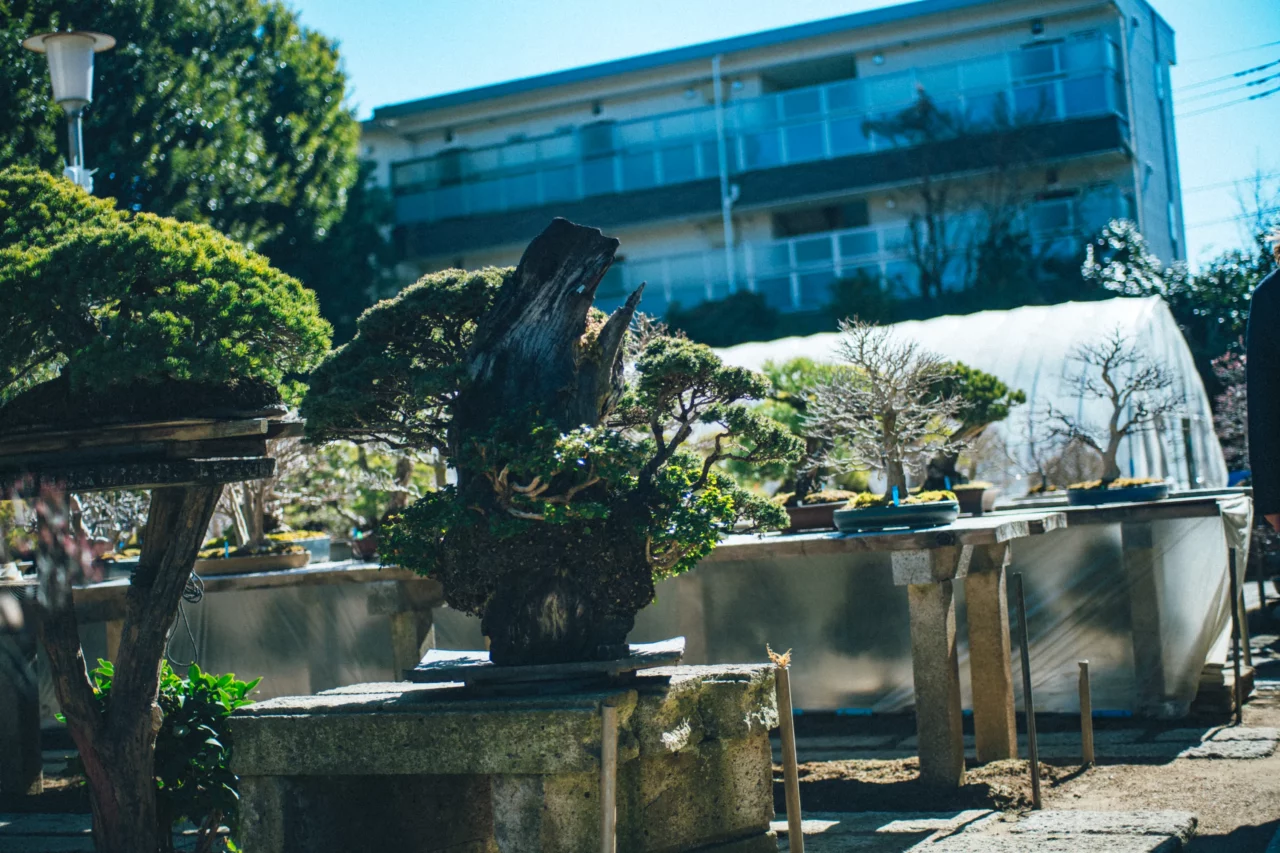
The art project Imaginary Saitama will continue to promote new charm of Saitama City. Several artwork plans and curation concepts have already been selected, and the goal is to realize one exhibition per year. Thinking about the untapped artistic potential being nurtured by the artists and Arts Council Saitama is truly exciting. We can’t help but look forward to keeping a close eye on the upcoming developments and activities.
Imaginary: Saitama – Sleeping Memory
Exhibition Dates: February 8, 2025 (Saturday) – February 16, 2025 (Sunday)
Opening Hours: 10:00 AM – 5:00 PM
*Free viewing on February 8 (Saturday) until 3:00 PM, February 14 (Friday) open until 7:30 PM.
Venue: Bonsai Shiki no Ie (267-1 Bonsaimachi, Kita-ku, Saitama City)
Artist: Leonid Zvolinsky (Composer, New Media Artist)
Organized by: Arts Council Saitama (Saitama City Cultural Promotion Foundation)
Cooperation: Tokyo University of the Arts Curation Education and Research Center, Saitama City Omiya Bonsai Art Museum




